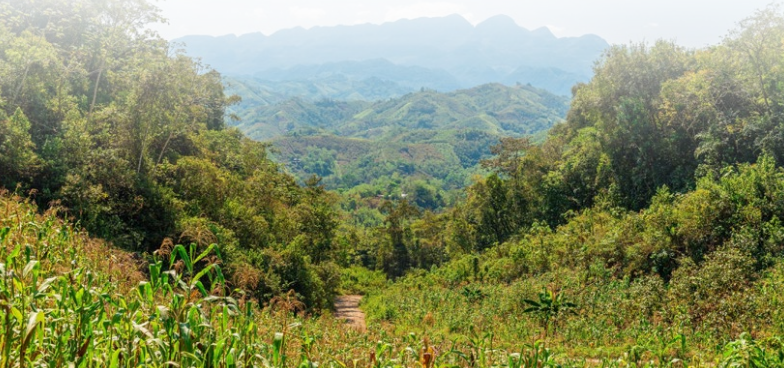An explainer: The Shamba System

There has been much debate about the Shamba System over the past few days following remarks made by Deputy President Rigathi Gachagua regarding reintroducing the controversial system.
What is a Shamba System?
The word shamba in Kiswahili means a farm. As the name suggests, under the shamba system, farmers grow both plantation trees and food crops on small plots, tending the trees and harvesting the crops until the trees become established.
The system traces its roots back to the colonial period. The colonial government introduced the Shamba System to cater to the demand for raw materials for the burgeoning timber industry and reduce pressure on natural forests. Despite its noble objectives, the shamba system was banned twice, in 1987 and 2003. The primary reason for the ban was mismanagement which led to destruction of natural forests.
Development of the Shamba System
In the initial stages of the system, farmers were absorbed into the Forest department as resident workers and allocated forest plots. The produce from the shambas was considered part of workers´ compensation as they tended the young trees.
The system was later revised, where the resident workers became permanently employed by the Forest department and were required to rent shambas. An increase in the number of farmers, lack of adequate knowledge of the shamba system, low tree survival rates, and supervisory challenges led to the first ban of the system.
The shamba system was later reintroduced in a few areas and dubbed Non-Resident Cultivation (NRC). Under the new system, the farmers were not allowed to reside in the forest areas. However, the system faced challenges and struggled to achieve its intended objectives. NRC was banned in 2003.
Management of the Shamba System
The former provincial administration played a central role in the management of the NRC. The system was implemented through the District Development Committees. The downside of this approach was that it gave local politicians a leading role in allocating forest plots, leading to the system’s abuse.
The system’s weaknesses included poor record keeping, indiscriminate allocation of plots, low stakeholder participation, and farming in prohibited areas.
Benefits of the Shamba System
The communities around forests benefit from being able to plant food crops in exchange for planting trees and taking care of them for some time. In return, the Kenya Forest Service gets a piece of land that has been reforested.
Criticism of the Shamba System
While the Shamba System is supposed to benefit communities living adjacent to the forests, most residents come from far-flung areas. The system, according to locals, is fast eating up vast chunks of forest blocks that once hosted acres of indigenous forests.
There are brewing conflicts between the farmers and native pastoralists who graze in the forests. Pesticides used by farmers are causing miscarriages in livestock, while herbicides pollute water sources.
While the Shamba System was introduced to increase forest cover, the system has been abused, with reports pointing out that the system is the most abused in the forest sector.
A report released in 2018 on forest resources management and logging activities in Kenya cites examples of abuse of the Shamba System. For instance, the report notes that the Shamba System in Mount Elgon Sub-county and Trans Nzoia County has resulted in the wanton destruction of the Mount Elgon ecosystem. Areas such as Kopsiro, Kaboywo, Chesito, Kipsagam, Teldet, Kiborowo, and Suam were still forested as late as 1972, but as of 2018, they are entirely stripped of indigenous trees.
Further, the report accused politicians and Kenya Forest Service personnel of irregularly allocating plots for their benefit. In some instances, allocated plots are sublet to non-citizens from neighbouring countries.
Conclusion
The ongoing debate on the Shamba System is a welcome move. It has sparked a social conversation on the merits and demerits of reintroduction of the system. Whichever way the pendulum swings, the Shamba System has enormous potential benefits for the environment and local communities if implemented correctly in line with sound policies. Suppose Kenya decides to reintroduce the system? In that case, it should consider doubling down on best practices, including adherence to policies and guidelines, proper and transparent allocation of plots, non-interference from politicians, and good organisation of local communities.

